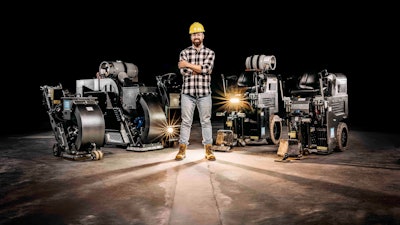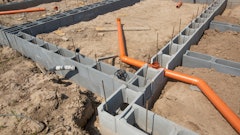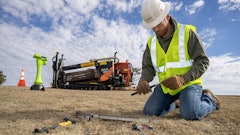
Over three million tourists head to Barcelona every year to see one of the most impressive Catholic churches in the world, the Sagrada Familia. What many don’t realize is that the building’s construction isn’t even complete, and it won’t be until 2026 — 147 years after construction work began. However, as less people join the construction industry, can we guarantee that the church will ever be finished? In this article Connie Johnson, vice president of marketing at surface preparation equipment manufacturer National Flooring Equipment, explores how the construction industry can end the skills shortage. This article is written from a UK perspective, but its lessons and tactics are applicable to the American construction and concrete industries as well.  For further information contact Connie Johnson, National Flooring Equipment: [email protected]
For further information contact Connie Johnson, National Flooring Equipment: [email protected]
Construction has always been a vital part of our lives, culture and economy. In 2017, the UK’s construction industry generated £113 billion (~$129 billion USD), which represented 6% of the country’s economy. The UK construction industry also contributes to employment, with 2.93 million people currently working in the sector, representing 10% of all employed people.
Despite the construction industry being vital in providing us with housing, contributing to our economy and increasing employment, the industry has declined since construction of the Sagrada Familia began.
Demand
Construction businesses are currently under pressure to provide more infrastructure at a faster rate. However, the industry is struggling to encourage young people to enter the field and only about 10% of construction workers are aged between 19 and 24. On the opposite end of the spectrum, 15% of UK contractors are in their 60s and planning to retire soon, creating more of a skills shortage as experienced construction workers leave the field.
The Chartered Institute of Building (CIOB) has reported that the UK industry must find 157,000 new recruits by 2021 to keep up with demand for more infrastructure. So how will businesses source the skilled workers to meet this demand?
Perception Is Key
Common misconceptions about construction have contributed to the growing skills gap in the industry. Construction is often perceived as a dirty, outdoor job that does not require much skill. However, the construction industry includes a range of disciplines such as architects, engineers, surveyors, bricklayers and many more. All of these are challenging and rewarding careers that require a broad range of skills.
Construction businesses are often also perceived as old-fashioned, but many are starting to invest in technology to remain competitive. In many areas of construction, including surface preparation, contractors have traditionally completed work using hand tools, which makes work time consuming and labor intensive.
By investing in powerful, modern equipment, contractors can work more quickly, efficiently and safely to meet demand. By promoting their investment in technology, businesses can highlight improvements in the sector and change outdated perceptions.
Inspiring a New Generation
According to data from the Construction Industry Training Board (CITB), young people often perceive construction careers as a path for people who do not get a place at a college or university. Its data also found that people aged 14 to 19 scored construction a 4.2 out of 10 on its appeal as a career option.
Businesses and education should work together to encourage younger people to see construction as an appealing career opportunity. Teachers should help young people to challenge stereotypes and understand the multiple skills and disciplines required in the industry. Businesses can also work with local schools to show students real life examples of careers in construction and challenge any stereotypes before it impacts a student’s opinion.
Responsibility
A lack of understanding about who is responsible for developing the next generation of construction workers is one of the main barriers to tackling the skills gap. Everyone in the industry should be concerned about the growing skills gap and do what they can to ensure the future of the sector.
Businesses, schools and trade bodies must work together to show students that construction can be a rewarding career that involves more than wearing a hard hat and working in a dirty, outdoor environment. Trade bodies can support companies to provide safe, efficient and modern workspaces for employees and challenge perceptions about the industries. Businesses and schools can also collaborate to ensure students have the opportunity to see construction as a potential career in the future.
National Flooring Equipment has over 50 years’ experience in the industry and aims to increase knowledge and understanding across the industry. We offer quarterly training sessions so that contractors can understand how to efficiently and safely use surface preparation equipment during construction work, which will hopefully help close the skills gap present in the industry.
We often forget that buildings like the Sagrada Familia would not exist without construction workers. Supporting the industry is the best way to ensure that buildings, both impressive and for everyday life, are built to meet the demands of our growing population.




















